 When your company is healthy and growing, it’s not uncommon for the subject of a merger or acquisition to come into play. They can be excellent strategic moves to help you gain additional distribution, capital, access to patented processes, or simply broaden your customer base.
When your company is healthy and growing, it’s not uncommon for the subject of a merger or acquisition to come into play. They can be excellent strategic moves to help you gain additional distribution, capital, access to patented processes, or simply broaden your customer base.
But while the CEOs, CFOs, and COOs are working out the details of the sale, your HR department will be dealing with the day-in-day-out human component. They’ll be fielding questions from concerned employees, figuring out how your employee benefits will be affected, and looking for possible solutions.
CHROs have a tough job ahead of them during mergers and acquisitions and we have some experience in assisting employers through the process. Here’s what we’ve learned and how you can apply it to your own employee benefits issues in mergers and acquisitions.
The Role of HR in Mergers and Acquisitions
Mergers and acquisitions are complicated endeavors, involving an incredible amount of work and attention to detail. Because HR departments are the ones who deal with the human component (arguably the most valuable in any company), they’re tasked with some of the most difficult pieces of the puzzle.
After all, a case can be made that human resources is far more complex than most other departments because every person is different. Each employee has different needs, motivations, and goals, which will cause each person to feel differently about the merger or acquisition. Some may feel apprehensive or scared, while others may be excited at the new possibilities.
As such, the failure to reach objectives after a merger or acquisition is oftentimes blamed on the human resources department. Reasons such as “incompatible cultures, [differences in] management styles, poor motivation, loss of key talent, lack of communication, diminished trust and uncertainty of long-term goals” are typically cited as barriers to success.
But if HR-related issues can be blamed for failure, there’s no reason they can’t be praised for the successful merger of two companies or acquisition of another. We’re willing to bet that the objectives behind such business strategies couldn’t be obtained without talented HR professionals easing the transition.
And of course, one of HR’s biggest responsibilities is employee benefits, which is bound to be at the forefront of employees’ minds during either a merger or an acquisition. Every aspect of employee benefits affects employees’ families, from health insurance and paid time off (PTO) to retirement benefits and childcare subsidies.

How to Create an Employee Benefits Package After a Merger or Acquisition
Regardless of whether two companies are joining as one or one company has acquired the other, two very different groups of people are coming together, which has both positive and negative consequences.
CEOs, COOs, CFOs, and CHROs will now be tasked with developing an employee benefits package that most people will be happy with, understanding that there may have to be some compromises along the way. Here’s what you should keep in mind when creating your new employee benefits after a merger or acquisition.
Don’t Turn Everything Upside Down Immediately
Both your new workforce and your old one will be curious as to how things will go after the merger or acquisition. They’ll probably be concerned they’ll lose their jobs, and even those that get to stay on will be concerned about changes in their employee benefits — and generally speaking, people have a hard time with change. So make it a little easier on people by making the transition a slow one.
- If your acquisition is complete as of August 1, don’t expect all your new employees to join your health insurance plan. As long as it’s possible with the insurance company (and this takes time, so start early), let them stay on their plan through the end of the year (or whenever your new plan year begins). This way, they get a few more months of normalcy before making the switch and they can sign onto yours through open enrollment. And when you prepare your benefits offerings for the following year, make sure you integrate a plan similar to what they’re used to (more on that later).
- As you figure out your new PTO policy, consider letting your new employees keep their old PTO policy until January 1. If they’ve already scheduled vacation and reserved the PTO, you can still honor that time (and garner a little morale in the meantime). If you don’t feel doing so is possible, perhaps come up with a compromise between their old policy and your new one until January 1, when the new policy will begin.
- Let them keep their retirement plans as-is until the new year. It may be possible to let them keep them forever, but if it’s not, check to see if you’re able to match their contributions for now and ask them to open a new account with the company you broker through on January 1. They can choose to transfer their balance, or just leave it where it is.
- Do whatever you can to make them feel welcome in their new offices. Consider holding a gathering where people can meet the new employees so they feel more at home. Make sure they have everything they need in their new space. And perhaps some custom water bottles, coffee cups, travel mugs, shirts, or other swag with the new company logo will show them you’re glad to have them as part of your team.
What Do Your New Employees Need?
As an HR professional at Company A, you may have a good handle on what’s important to your employees when it comes to your medical plan (or plans). Perhaps your workforce is generally healthy, young, and diverse in terms of age, and your large claims have been manageable in the past few years.
The employees at Company A may very well have enjoyed high deductible health plans (HDHPs) because of their generally healthy status. Some employees who needed a higher degree of healthcare probably chose a more traditional plan (assuming one was offered), but it was balanced out by those who rarely needed medical attention.
But you’re merging with Company B, who has an aging workforce suffering from more chronic conditions, and has submitted multiple large claims in recent years. Company B’s employees had much more use for traditional plans and chances are, very few opted for consumer-driven plans.

The very best option for newly formed Company "AB" would be to offer multiple choices when you roll out your new employee benefits. While you may decide to change carriers, you can structure your medical plans in almost identical fashion to what you had previously. The HDHPs will still be popular among those who’ve always used them, but those who used the traditional health plans would want to stick with that plan structure. Therefore, it wouldn’t be in your best interest to abandon traditional health plans in an effort to save money. Your new employees from Company B may not be thrilled about that decision, which may lead them to job-hunt.
Like we said, you don’t want to make too many changes at once and you don’t want to alienate the new members of your workforce by taking away a benefit they find invaluable. Remember when New Coke was launched? It flopped horribly, not because it was introduced as a new option but because it was launched as a replacement for the old, beloved Coke. Don’t make this kind of mistake by taking something away that could otherwise easily be left in place.
Blending Your PTO
When your new employees sign onto your employee benefits package, they may be surprised to find out your paid time off policy is different than it used to be, or that the amount of PTO is lower.
If Company A had separate pots for PTO (vacation time, sick time, personal time), they may expect to keep this policy (especially in the case of an acquisition).
If Company B had one big pot for PTO (where time off could be used for either vacation, illness, or personal reasons), they may be dismayed to find their vacation time is limited to a specific number of days that very well may be fewer in number than their old pot.
You’ll want to take both workforces into consideration here — you don’t want to alienate either workforce, so it’s likely that you’ll need to compromise (especially in the case of a merger). One important thing to remember is that offering one pot of PTO can mean people who need to take time off for illness (especially if they have kids) will eat up their vacation time quickly.
Let’s say employees at Company A received 10 vacation days, 5 sick days, and 2 personal days, and the employees at Company B received 15 days of PTO. If an employee of company B was rarely sick, he or she could have taken three weeks of vacation, but an employee who needed a lot of sick time might only have a couple days left to use for vacation.
Chances are, employees will have widely varying opinions on which method they prefer, so you should definitely ask — but more on that later.
Retirement Accounts
Retirement matching is something that varies widely across businesses. Some don’t provide a match at all, while some double match, and others provide profit-sharing. Become familiar with what the policy was at the company you’re merging with or acquiring and then keep it in mind when onboarding all your new employees.
If they’re used to a 4 percent match, which all of a sudden gets knocked down to 2 percent, they might feel frustrated, or that their new company doesn’t value them as highly as their old one did (again, leading them to job-hunt). However, you could sweeten the deal by adding in profit-sharing tied to tenure with the company. For example, every full-time employee could be entitled to a 2 percent match, but for every year they’re with the company, they get a certain amount (whether a specific dollar amount or percentage) of profit-sharing added to their 401(k).

When In Doubt (And Even When You’re Not): Ask!
While you need to make sure you set limits that make sense for your company in its new form, you can’t go wrong with taking the temperature of the room. Consider setting up a survey through SurveyMonkey or Google Forms and ask your employees what type of employee benefits they’re looking for.
- How would they prefer their PTO be organized (one big pot versus separate categories)?
- What type of telecommuting arrangement were they comfortable with?
- Were they happy with their previous employee benefits package? What did they like about it? What didn’t they like about it?
- Is a HDHP or a traditional health plan more appealing?
- Is life insurance important to them?
- What about dental and vision insurance? Do they find value in either, or one over the other?
Having this information can help you tailor your employee benefits to your new workforce, but the solicitation process in-and-of itself is a huge win. The very act of seeking their opinions will make them feel valued as employees and you’ll have the knowledge necessary to cultivate a better benefits package.
Employee Benefits Issues after Mergers and Acquisitions
Employee benefits are a complicated venture after a merger or an acquisition. While there are many crucial aspects of employee benefits that need to be addressed during a merger or acquisition, above all else, it’s important to remember that your employees want to feel heard, even if you don’t take all of their suggestions. Providing qualitative and quantitative feedback mechanisms such as one-on-one interviews, focus groups, and anonymous surveys are an important component of your merger or acquisition.
There are so many factors involved and it’s all too easy to drop the ball and lose employees because of it. CHROs certainly have their work cut out for them, but it doesn’t have to be an uphill battle — your friendly neighborhood employee benefits broker is here to help the transition go more smoothly.
What employee benefits concerns do you have after a merger or acquisition? Leave us a comment below or contact us. We’d love to help you find a solution!

















